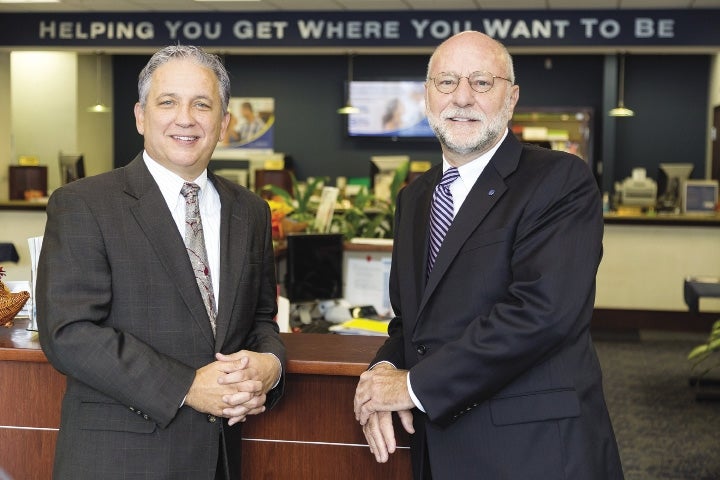When Barre Savings Bank President and CEO Guy Boyer went looking for a partner bank to merge with, it was the culture of Fidelity Bank, headquartered in Leominster, that drove his final decision, not figures and numbers. With 146 years of serving the community in and around Barre, it was important to him that a partnering bank have the same outlook and attitude toward its customers and employees as Barre has.
Regulatory pressures requiring an ever increasing amount of resources and narrow profit margins had pushed Barre Savings to find a partner while it still had value to bring to the equation, Boyer said. While it is vital to confirm that the numbers work, the overall attitude and culture of the partnering organizations can mean the difference between a smooth merger and one that feels forced.
Boyer said part of his goal was to ensure that the bank’s community tradition would continue on with the new bank, which will operate under the Fidelity charter.
“When you do a merger, there’s a possibility you could give up your identity. So from my perspective the most important thing was to find a bank that had an identity that our customers, our employees and the community would feel represented little to no change,” he said. “With so many mergers that didn’t work there were problems between … the different cultures that didn’t align properly.”
Fidelity Bank Chairman and CEO Edward Manzi Jr. said that culture is often overlooked and not discussed enough when two companies come together.
“Every place has a culture. Some of them do it on purpose and some of them do it by default,” Manzi said. “It’s driven by your values and it’s essentially the way you do things. It’s the way you treat each other and how you conduct the company … and the long-term focus.”
For Hometown Bank, based in Oxford, the personal connection and service to customers is something that sets it and other community banks apart, said Joe Klimavich, vice president of communication for the bank. Maintaining this culture is imperative to maintaining customers, according to Klimavich and the other bankers.
“Hometown Bank has a recognizable personality, one that’s approachable, flexible and involved in the community. It is important that our partners share those characteristics because we are confident that’s the way banking should be,” Klimavich said.
Hometown Bank recently announced a merger of its holding companies with Easthampton Savings Bank. The banks will bring together their assets but continue to operate independently. However, the bank has been involved with more extensive mergers.
Hometown Bank merged with Athol-Clinton Cooperative Bank in 2011. Both had been founded in 1889. With such a long history, it was important to bring staff into the fold while also communicating to customers that the culture of the bank was not changing, Klimavich said.
“Today’s banking customers have a multitude of choices — there’s a bank on every corner — so a bank’s culture and values are incredibly important if they are going to stand out from the crowd,” he said. “Most customers want to bank where they are comfortable, with people they like and trust to look out for their best interests.”
Absorbing
The importance of corporate culture does not diminish when it is not a meeting of equal companies. When Commerce Bank incorporated the Mercantile Bank & Trust Co. that had three branches in 2012, it was an absorption more than a merger. In addition to changing the physical structures of the buildings and different methodology of daily operations, it was important to ensure the employees were a part of the Commerce culture before the doors opened on the first day at the former sites.
Commerce President and CEO Brian Thompson took a personal approach, agreeing with Boyer and Manzi that culture, while instilled in everyone, is driven from the top down, with those in power having a huge ability to set the tone for an institution.
“I met with all the groups of employees often … I would sit with them and have a cup of coffee with them and get to know about their families,” Thompson said. “It is continuous and you do it all the time. You make a conscious effort to integrate your team.”
Merger tips
One of the biggest things to be done when beginning the move to a merger is to closely examine the other company’s culture, said Boyer, who did this firsthand by both meeting with Manzi and taking a few trips to Fidelity branches.
“I like to think I can walk into a bank and get a feel for their culture in 10 minutes just by speaking to people and observing people,” Boyer said.
Transferring and melding cultures is something that has to come from leadership, but be adopted by everyone in the organization, Manzi said. Skills can be trained, but culture is something that needs to be instilled by all employees, he said.
“We can write all these things down on paper and what our commitments are … (but) at the end of the day, this culture lives in people and every part of this culture lives in people. You can’t train that,” Manzi said.
Being active in a very hands-on way was Thompson’s way of instilling the culture and working towards a smooth transition. Whenever two companies come together, it is important to be as transparent and fair with employees as possible, he said. This extends to getting new employees accustomed to the organization.
One thing is for certain, according to Thompson: These types of mergers of community banks will continue. Every institution needs a critical mass in order to be able to hire talented workers while managing costs. With increased regulations and reporting, mergers like that of Fidelity and Barre will continue to happen.
“The people that are selling today are in the smaller category because the margins have continued to shrink, so the numbers are less,” Thompson said.

